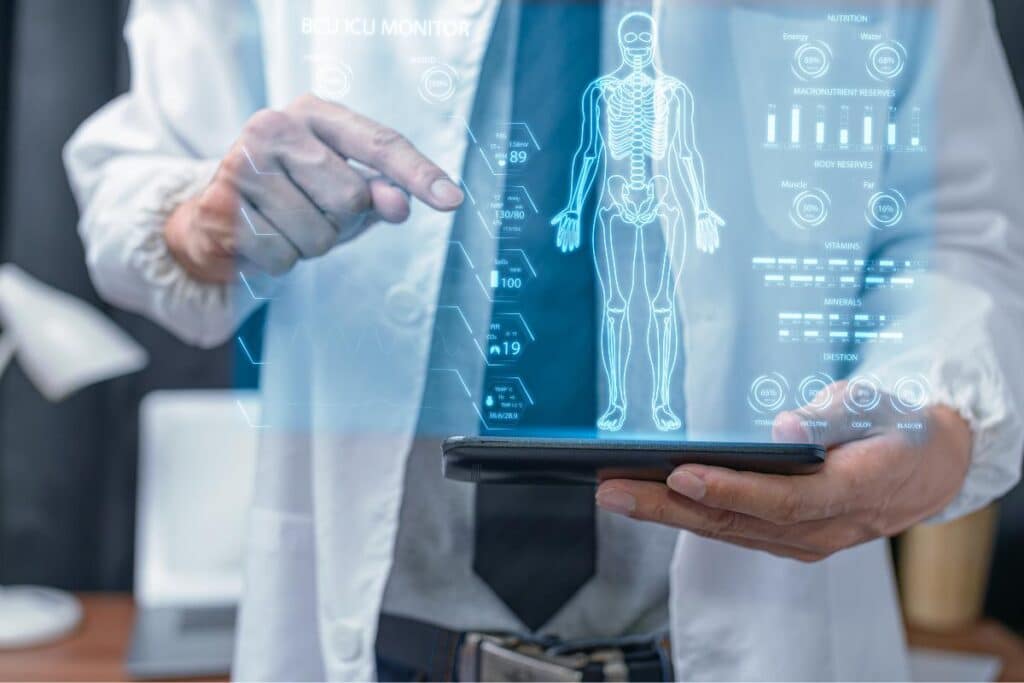3D body scanning technologies have witnessed significant advancements in recent years, revolutionizing how we capture and analyze human body data. Various 3D body scanning technologies have emerged, each offering unique advantages and applications across different industries.
From laser-based systems to medical imaging techniques, let’s delve into the types of 3D body scanning technologies and understand how they contribute to this transformative field.
1. Laser-based 3D Body Scanning:
Laser-based 3D body scanning, also known as laser scanning or LiDAR (Light Detection and Ranging), utilizes laser beams to capture the surface of an object, including the human body. The system emits laser light that reflects off the body’s surface and returns to the scanner’s sensor, measuring the time it takes for the light to travel back. Using multiple lasers and sensors, the scanner creates a point cloud, a collection of 3D coordinates representing the surface of the scanned body.
Advantages:
- High precision and accuracy, capturing intricate details of the body.
- Fast scanning speed, enabling real-time or near-real-time 3D model generation.
- Suitable for capturing static or dynamic poses, making it useful in various applications like fashion, entertainment, and ergonomics.
Applications:
- Custom clothing design and virtual try-on in the fashion industry.
- Creation of lifelike virtual avatars in the gaming and entertainment sectors.
- Anthropometric research and ergonomic design for products and environments.
2. Photogrammetry-based 3D Body Scanning:
Photogrammetry-based 3D body scanning relies on photographs taken from different angles to create a 3D model. Specialized software analyzes the images and triangulates the positions of various points on the body to reconstruct the 3D shape. Multiple images are essential for accurate results, and markers or reference objects may be used to improve precision.
Advantages:
- Non-contact method, making it safe and suitable for scanning sensitive body areas.
- It requires minimal equipment, as it utilizes standard cameras or smartphone cameras.
- Well-suited for capturing dynamic movements, such as in sports and fitness applications.
Applications:
- Virtual try-on and sizing recommendations in online retail and fashion.
- 3D scanning on the go with the use of smartphones and photogrammetry apps.
- Athletic performance analysis and motion tracking in sports and fitness.
3. Structured Light 3D Body Scanning:
Structured light 3D body scanning involves projecting a pattern of light onto the body’s surface and capturing its deformation. The system uses a camera to record the pattern distortion, which is then processed to generate a 3D model. This method is based on the triangulation principle, which calculates the distance between the camera and the surface points.
Advantages:
- High-speed scanning, suitable for capturing moving subjects and real-time applications.
- Accurate results, particularly when combined with high-resolution cameras and precision projectors.
- Effective for scanning larger areas of the body, making it useful in industries like healthcare and fitness.
Applications:
- Healthcare applications, such as orthotics, prosthetics, and wound monitoring.
- Body measurements for fitness and body composition analysis.
- Virtual reality and gaming for creating interactive experiences and avatars.
4. CT/MRI-based 3D Body Scanning:
CT (Computed Tomography) and MRI (Magnetic Resonance Imaging) are medical imaging techniques that can also be utilized for 3D body scanning. While not as commonly used for general body scanning as the other methods, they offer unparalleled insights into internal anatomical structures.
Advantages:
- Detailed visualization of internal organs, bones, and tissues.
- Highly valuable for medical and healthcare applications, including surgical planning and diagnostics.
- Provides volumetric data for a comprehensive understanding of the body’s internal composition.
Applications:
- Pre-surgical planning and simulation for complex medical procedures.
- Investigation and diagnosis of internal medical conditions and abnormalities.
- Research in anatomy, physiology, and medical education.
Conclusion
In conclusion, the diversity of 3D body scanning technologies has paved the way for precise and personalized data capture across various industries.
Whether it’s fashion, healthcare, fitness, or entertainment, each type of 3D body scanning technology offers distinct advantages, contributing to this transformative field’s continued growth and development. As technology progresses, we can expect further improvements and innovations that will push the boundaries of 3D body scanning and its applications.
If you or someone you know is looking to improve your health, share this article on Facebook or Twitter so that others can learn more about self-care.




